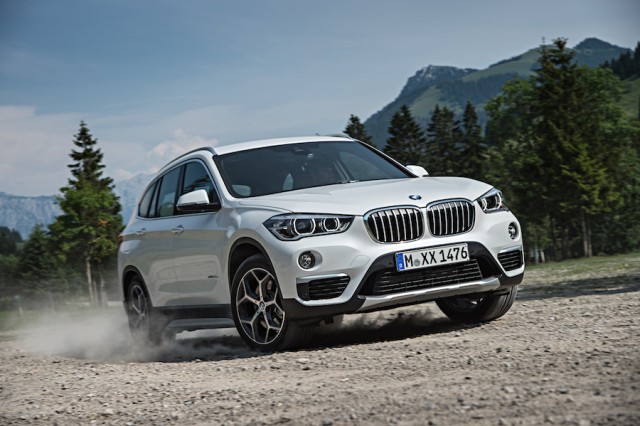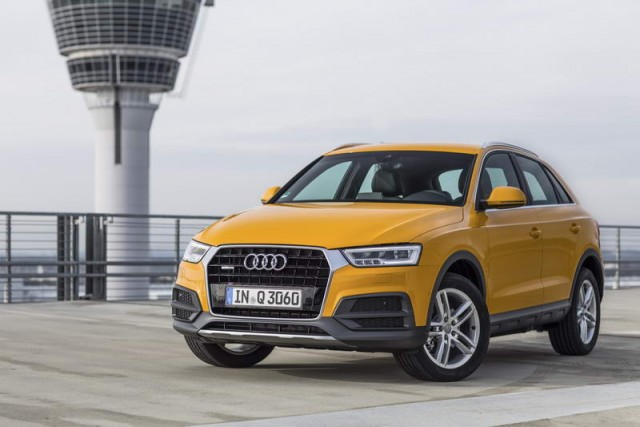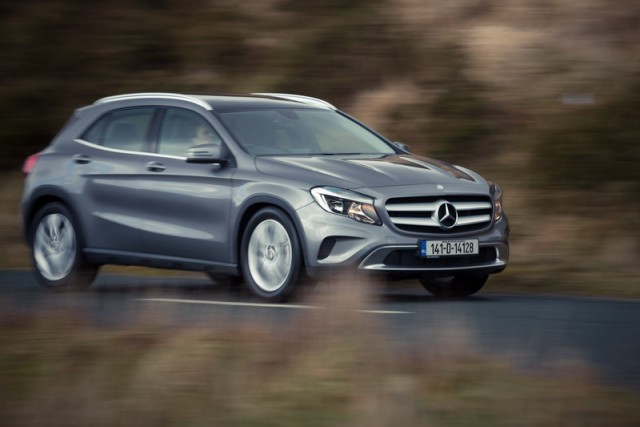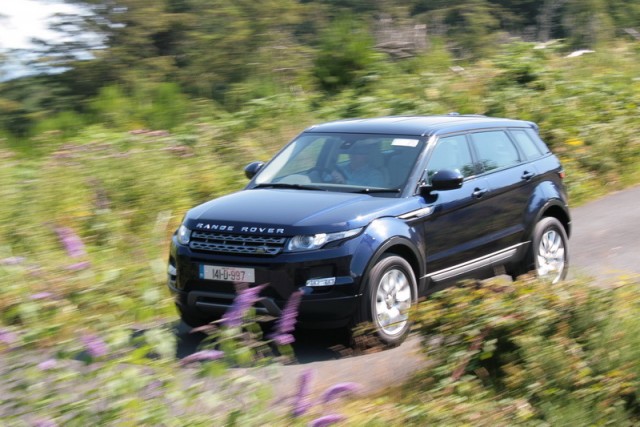The BMW X1 might have trail-blazed the small premium SUV segment, but it wasn't without its faults. This all-new X1 addresses those, adding significantly more space, improving refinement, increasing comfort and exhibiting greater quality to make it a far more convincing all-round premium SUV package.
In the metal 4/5
The original BMW X1 might not have been the first small SUV out there, but it was the first to be offered by a premium maker. BMW admits now that it was a bit of a rush job, an afterthought cobbled together from a collection of parts it had. Thing is, it was a huge success despite that, so BMW is doing it properly this time around. That means it sits on BMW's new small car platform, which means transverse engine fitment - to the benefit of both packaging and styling. With its engine turned through 90 degrees the X1's bonnet is no longer long, so the second generation X1 is proportionally more recognisable as an SUV - its predecessor had a bit of an ungainly, tall estate car look about it. Overall, it's shorter then, but it's a far more cohesive, robust-looking SUV, with all the styling cues of its X3 and X5 relations. There are shorter overhangs front and rear, again, endowing it with a more convincing SUV look, giving the second-generation X1 a better chance to compete against the various pretenders that followed it, such as Audi's Q3 and the Mercedes-Benz GLA.
It's not just the outside that has benefitted from its new technical specification and platform. Inside, the cabin is hugely more spacious than the car it replaces, the X1 having masses of additional passenger and luggage space. Factor in a cabin that's trimmed from higher grade materials than before and the X1's far more worthy of the premium badge on its bonnet. There's good space in the back seats for adults with 37mm more legroom, the rear seats also sliding by up to 13cm to offer more boot space if required. The boot itself is far more capacious, larger by 200 litres over its predecessor's at full capacity, the seatbacks folding down to a flat floor and the tailgate opened automatically.
Driving it 4/5
Reviewed here in X1 xDrive25d form, with the most powerful version of the four-cylinder TwinPower turbodiesel engine, this BMW X1 isn't entirely representative of what Irish customers will buy. Rather than this 231hp model, we'll buy the xDrive20d with 190hp or sDrive18d with 150hp - that sDrive name denotes front-wheel drive as opposed to the xDrive's all-wheel drive. Neither will match the xDrive25d's outright pace, which means 0-100km/h in 6.6 seconds, though the xDrive20d isn't too far behind with a time of 7.6 seconds. The four-cylinder turbodiesel's performance is strong, it more eager than most diesels to rev, though it does get a little bit percussive if you ask a lot from it. The noise isn't intrusive as such, being more a background accompaniment than overbearing, but after the smoothness of the petrol-powered four-cylinder (we tested the not-for-Ireland xDrive25i, too) it's obvious.
Combined with the eight-speed Steptronic automatic you'll forgive it a bit of background noise, as it's an easy, effortless drive. The gearbox might have eight ratios to choose from, but it's so adept at it you're unlikely to notice it swapping between them. There's some talent to the chassis, too, so long as you don't ask too much from it. The steering is quick and nicely weighted, accurate and not entirely devoid of feel. It makes the X1 a rather entertaining steer, with agility that's pleasing; it's certainly the most enjoyable of its type behind the wheel. Get carried away and it'll push into understeer, though backing off reveals some adjustability, the X1's chassis entirely predictable, yet fun, the X1 exhibiting much of the sporting character of its X3 and X5 relations in this respect. It feels significantly more grown up too, thanks in no small measure to the improved space inside, making it feel more like an X3 in character than something based on BMW's small car architecture.
What you get for your money 3.5/5
The BMW X1 will be more expensive to buy than its mainstream alternatives, but that premium badge will pay dividends when it comes to sell it, the X1 retaining more of its value so ultimately costing you less - so expect it to do well on PCP finance. Three trims will be offered, with xLine as the basis, Sport Line above that and M Sport heading the range - it gaining a more assertive style inside and out and suspension tuned for more sporting driving.
Irish pricing for the launch models has been confirmed ahead of the on-sale date of 24 October:
X1 xDrive20i Sport (auto standard): €48,880
X1 xDrive20i xLine (auto standard): €51,260
X1 xDrive20i M Sport (auto standard): €51,260
X1 sDrive18d SE: €41,310
X1 sDrive18d Sport: €43,510
X1 sDrive18d xLine: €45,710
X1 sDrive18d M Sport: €45,710
X1 xDrive20d Sport: €47,950
X1 xDrive20d xLine: €50,200
X1 xDrive20d M Sport: €50,200
X1 xDrive25d xLine (auto standard): €54,150
X1 xDrive25d M Sport (auto standard): €54,150
Summary
The original BMW X1 might have been something of an accidental success, but its strong sales have meant that BMW has created a worthy replacement for its original toe-dipping exercise. Few, if any, will be sold in Ireland in top-spec form as reviewed here, but the chassis reveals real talent, there's great new looks combined with a more practical, more spacious and higher quality interior, all of which makes the X1 a very strong rival in the segment it helped create.















































